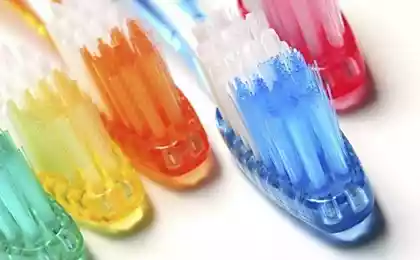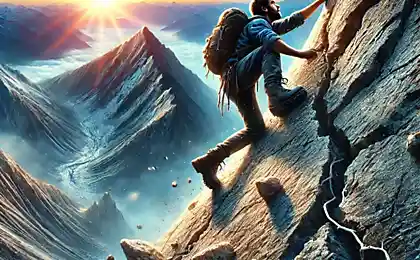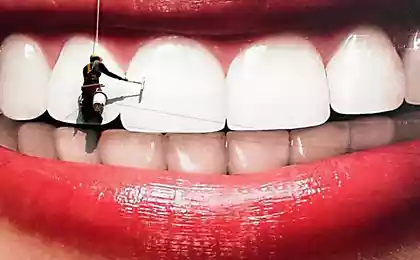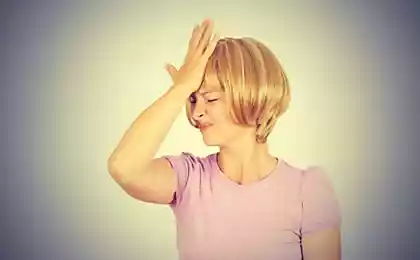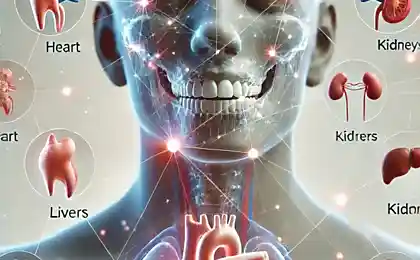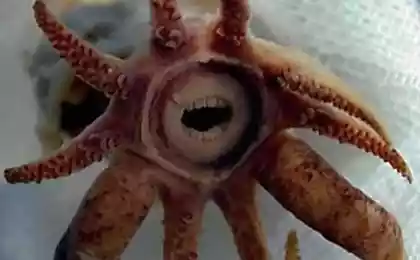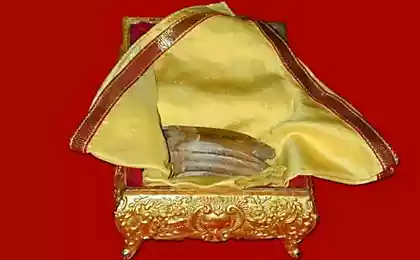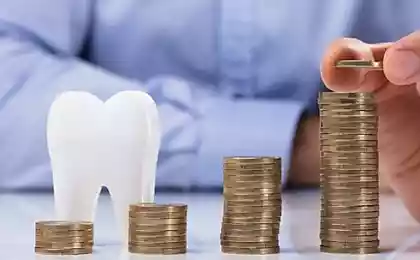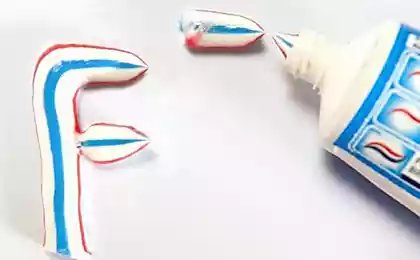600
8 mistakes you admit when brushing your teeth

It's not news that we brush our teeth not only to clean up bad breath, but also to purify the oral cavity from dirt and germs. But what if brushing your teeth really is not a panacea for tooth decay and gum disease? What if sometimes brushing your teeth can be even worse? This thought is scary, isn't it?
Many of us do when brushing teeth is quite a common error, resulting in harm to the health of the oral cavity.
Brushing your teeth is a manipulation that affect the teeth and gums two types of effects: mechanical and chemical. Both are aimed at removing from the surface of the teeth of soft plaque consists of billions of bacteria, waste products and food debris. To convince you that this plaque should be regularly removed, probably not worth it, but still need to be reminded that if it is not effectively cleaned, it creates the conditions for the development of caries and inflammatory diseases of the gums. So, to brush our teeth well, that is correct. Let us examine both types of impacts. Let's start with the most simple, chemical.
Why is it simple? Because for normal healthy adults does not matter what toothpaste to use. Of course, I am here to speak about preventive toothpastes purchased in supermarkets and not on the medicinal pastes, appointed by your doctor and only applies in your specific case.
It is much harder to make a mistake in the mechanics of brushing your teeth. These eight points, we now analyze them in detail.
1. You brush your teeth long enough
Dentists recommend brushing teeth for 2-3 minutes, but few people follow this advice. Next time try to note the time and check how many minutes you spend brushing your teeth. Most likely, rushing to work in the morning or to bed in the evening, you'll work with a brush in just about a minute. To get rid of this error, set your phone timer for 2-3 minutes. How you can buy an electric toothbrush with an automatic timer. 2. You do not watch what you do make it a rule to look at yourself in the mirror while brushing your teeth. So you can see what you are cleaning. Very easy to miss the area of the teeth just above the gum line (and in fact, there is accumulating bacteria and formation of Tartar, which can lead to tooth decay and gum disease). Another difficult area is the last molars and wisdom teeth. If the brush head comes to rest upon the cheek and cause discomfort, you can do them not to touch. Don't forget to brush your teeth and the oral cavity, and not only those surfaces that you see in the mirror when you smile. Look in the mirror and check whether all the teeth brushed. As a bonus, you much earlier will notice that their teeth have something wrong, if you regularly examine them in the mirror. And the sooner you notice the problem, the easier and less painful the treatment will be. 3. You are wrong to hold the brush Correctly scrubbing, you can not only help, but also harm the teeth. The movement of the brush the mouth must always be directed away from the gums to the cutting (chewing) surface along the axis of the tooth, not across like most people do. To relearn is difficult, but necessary. Otherwise, cleaning across the axis of the teeth leads to mechanical damage to the enamel in the region of the necks, especially front teeth. When brushing hold the brush at an angle of 45 degrees to the tooth surface. Mentally divide the teeth into groups and thoroughly clean each group smooth circular motions. Then go to the chewing surfaces — they just can be cleaned by holding the brush right. Don't forget to make sure the gum line, wisdom teeth, too, have been cleansed of all impurities.
4. You are too much, click on a brush the chances to damage the enamel even more increase if you are only doing was wrong, but strongly press the brush. This error can lead to increased tooth sensitivity and even to the appearance of notches near the gum line. Besides brush your teeth without touching the gums, is almost impossible, and if pushing on the brush you destroy the enamel, just think what happens to your delicate gums. Roughly speaking, they are not to be envied. 5. You use the wrong brush Buy only soft toothbrushes and brush of medium hardness. Remember that a stiff brush bring teeth more harm than good. Hard brushes with regular use can damage tooth enamel and injure the gums. If you have diseased gums, use a soft brush. To change the brush need at least once in three months and in case of divergence of fibers and their strain — more often. Some modern brushes have a color indicator that will help you understand what you need to replace. The soft brush will minimize the damage improper cleaning of the teeth and does not reduce the effectiveness with the right. Electric toothbrushes will fit even better. To harm the teeth with them is almost impossible.
With proper brushing of the difference in efficiency between electric, ultrasonic and conventional brushes do not do any. Ksenia Akhutina, the chief doctor of dental clinic "Allegro": 6. You use wrong paste, Be careful to the ingredients that are contained in your toothpaste. A toothpaste that contains baking soda, well bleach the teeth, but very harmful to the enamel. This is the case when the compromise is not worth going — white-toothed smile (which is not long per se) is not worth of cracks and cavities, which can develop. In stores now there are many other whitening toothpastes, it does not harm the teeth. Overall, between the regular (not medical) toothpaste there is no difference, but it is best to alternate the different pastes, and not to focus on any one. Ksenia Akhutina, the chief doctor of dental clinic "Allegro": 7. You don't floss Dental floss helps to clean the surface between the teeth where a toothbrush cannot reach. Tooth decay often develops on those surfaces where two teeth touch, and there its just harder to notice in the early stages. This can lead to tooth decay. In short, floss is not just desirable, but necessary. Tear off a large piece of dental floss (about 40 cm) and wrap the ends to the middle fingers. Thumb and index finger guide the floss between the teeth. Avoid movements back and forth, this can injure the gums. Wrap the thread around the tooth and pull the lasso from the bottom up. Then move on to the next tooth.
But the use of toothpicks, especially wooden ones, should be avoided. They greatly injure the interdental papilla and can lead to the formation of the periodontal pocket. This can even result in loss of the tooth. 8. You don't rinse your mouth after brushing Proper brushing and flossing effectively cleans the teeth, but another key point is to rinse. It'll definitely wash away all the bacteria and pollution that you could accidentally miss. There are special antibacterial washes, which not only wash away the dirt residues, but also strengthens the gums and enamel. If you do not have the means to gargle, rinse the mouth with water is better than nothing. But even if you do everything right, Ksenia Akhutina advises at least once a year to appear at the dentist for removal of hard deposits, periodontal ultrasound, and at least every six months to have the same dentist professional hygienic cleaning teeth. Even if you do everything right, please at least once a year, remove dental periodontal ultrasonic solid deposits. And at least once every six months come from the same dentist professional hygienic cleaning teeth. Remember, the less you are in a dental office, so in the end will cost you more expensive treatment. published
Source: the-challenger.ru/sos/8-oshibok-kotorye-vy-dopuskaete-kogda-chistite-zuby/

